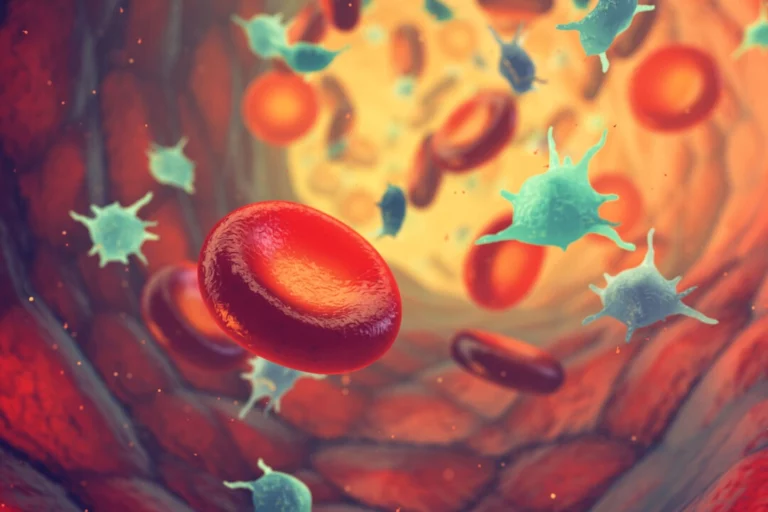Cancer mortality in Japan: Study shows increase since vaccination began
Interesting data from Japan: cancer mortality has increased significantly in connection with the corona vaccinations. This gives us further confirmation that corona mRNA vaccinations promote cancer. The first dose brought an increase that was accelerated with each subsequent dose. However, there was no change in 2020.
Source: TKP.at, Dr- Peter F. Mayer, 04 May 2024
The study by Miki Gibo et al appeared April 8 in Cureus, titled “ Increased Age-Adjusted Cancer Mortality After the Third mRNA-Lipid Nanoparticle Vaccine Dose During the COVID-19 Pandemic in Japan . ” -Lipid nanoparticle vaccine dose during the COVID-19 pandemic in Japan). The mRNA preparations were also used in Japan. The title also suggests a causal influence of lipid nanoparticles. This study shows a sharp increase in cancer cases worldwide and deepens our understanding of the causes.
Here is the translation of the summary [emphasis mine]:
During the COVID-19 pandemic, excess deaths, including cancer, have become a problem in Japan, which has a rapidly aging population. Therefore, this study examined how age-adjusted mortality rates (AMR) for different cancer types changed in Japan during the COVID-19 pandemic (2020-2022). Official statistics from Japan were used to compare observed annual and monthly AMRs with predicted rates based on pre-pandemic numbers (2010-2019) using logistic regression analysis.
No significant excess mortality was observed in the first year of the pandemic (2020) . However , some excess cancer mortality rates were observed in 2021 after mass vaccination with the first and second doses of vaccine , and after mass vaccination with the third dose in 2022, significant excess mortality rates were observed for all cancers and some specific cancers (including ovarian cancer, leukemia, prostate cancer, lip -ear/throat cancer, pancreatic cancer and breast cancer).
AMR for the four most fatal cancers (lung, colon, stomach and liver) trended downward until the first year of the pandemic in 2020 , but the decline slowed in 2021 and 2022 . This study discusses possible explanations for this increase in age-adjusted cancer mortality rates.
Formulation of mRNA preparations is the cause of cancer
The microbiological and biochemical mechanisms of action will be discussed in the discussion section. A clear relationship is established between cause and effect. Here are some excerpts from the Discussion section:
Researchers have reported that the SARS-CoV-2 mRNA LNP vaccine may bring the risk of cancer development and progression [25-28]. In addition, several case reports have described cancer developing or worsening after vaccination, and possible causal links between cancer and mRNA-LNP vaccination have been discussed [29-34].
Based on the molecular weight of BNT162b2 mRNA (Pfizer-BioNTech), the mRNA content per dose is estimated to be 13 trillion molecules and 40 trillion molecules in mRNA-1273 (Moderna) [35,36]. The total number of human cells is estimated to be 37.2 trillion [37], so the number of mRNA LNPs is very high, ranging from a third to the equivalent of the total number of cells. After inoculation, the mRNA-LNPs enter various organs, particularly the liver, spleen, adrenal gland, ovaries and bone marrow [38]. In one study, vaccine mRNA was detected in the lymph nodes of vaccinated individuals by hybridization of a SARS-CoV-2 mRNA vaccine-specific probe 7 to 60 days after the second dose of mRNA-1273 or BNT162b2 [39]. N1-methyl-pseudouridine-modified mRNA was able to translate a large amount of SARS-CoV-2 spike protein (S protein) [40]. The S protein appeared on the surface of exosomes in the blood of those vaccinated [41]. Fragments of vaccine-specific recombinant S protein were found in blood samples from 50% of those vaccinated and were still detectable three to six months later[42].
It is therefore reasonable to assume that the additional thrombus formation tendency observed with the mRNA-LNP vaccine could be extremely dangerous. The S protein of the SARS-CoV-2 virus and vaccine, especially the Omicron lineage, has a solid electropositive potential and can attach to electro-negative glycoconjugates on the surface of red blood cells (RBC), other blood cells and endothelial cells [53]. The S protein of SARS-CoV-2 alone reportedly binds to angiotensin-converting enzyme 2 (ACE2) and activates angiotensin II receptor type 1 (AT1) signaling, which regulates interleukin trans-signaling. 6 (IL-6) promotes [54], induces vessel wall thickening via activation of protein kinases [55], impairs mitochondrial function [56] and generates reactive oxygen species (ROS) [57]. A recent study found that certain sections of the S protein can induce the formation of amyloid, a fibrous, water-insoluble protein. This protein plays an important role in blood coagulation and fibrinolytic disorders [58]. Anti-spike protein antibodies bind to the S proteins that arise on cell surfaces, triggering autoimmune inflammatory responses [59-63]. Furthermore, injection of LNPs into mice has been reported to induce severe inflammation [64]. All these findings suggest that the COVID-19 mRNA-LNP vaccine poses a risk of thrombosis in cancer patients and may explain the high mortality rate after mass vaccination.
Suppression of cancer immunosurveillance
Some studies have shown that type I interferon (INF) responses, which play an essential role in immune surveillance of cancer, are suppressed following SARS-CoV-2 mRNA-LNP vaccination [65,66]. A large number of exosomes containing microRNA (miRNA)-148a and miRNA-590 are released from cells in which large amounts of S protein have been translated, and each miRNA represses the ubiquitin-specific peptidase 33 (USP33)-axis. Interferon regulatory factor (IRF9) in microglia that internalize these exosomes [67]. In a review article, Seneff et al. explain that this suppresses the function of type I IFN and BRCA2, which are critical factors against cancer cells [26]. The expression of programmed death ligand 1 (PD-L1)/programmed cell death 1 (PD-1) in the tumor microenvironment significantly suppresses immune surveillance of cancer [68]. One study showed that exposure to S protein increases the surface expression of PD-L1 on a variety of immune cell types and tumor cells and of PD-1 on T cells, which suppresses the activity of CD4+ and CD8+ T cells against cancer cells[69 ]. In another study, non-cancer-specific IgG4 was found to inhibit antibody effector functions mediated by cancer-specific IgG1, as evidenced by the dramatic growth acceleration observed in implanted colorectal and breast tumors and carcinogen-induced cutaneous papillomas following local administration of non-cancer-specific IgG4 was [70]. According to a meta-analysis in all cancers, pancreatic cancer and lymphoma, the standardized incidence ratio (SIR) of patients with IgG4-related diseases (IgG4-RD) to the general population was 2.57 (95%CI: 1.72, 3.84), 4.07 (1.04, 15.92) and 69.17 (3.91, 1,223.04) [71]. In another study, anti-spike IgG4 levels increased in the serum of SARS-CoV-2 mRNA vaccine recipients after the second dose and continued to increase after the third dose [72]. A review paper on IgG4 discussed how long-term exposure to large amounts of specific antigens, such as those found in SARS-CoV-2 mRNA vaccines, can cause uncontrolled growth of cancer cells through a class switch from IgG1 or IgG3 to IgG4 [73] . Another study showed that IL-10 release increased with nonspecific stimulation in fresh whole blood from recipients of the second dose of BNT162b2 or mRNA-1273 within two weeks [74]. These results may explain the increased mortality in all cancers, particularly the increased mortality in pancreatic cancer and breast cancer in our study.
The SARS-CoV-2 vaccine has been shown to cause immunosuppression and, in some cases, to reactivate latent viruses such as varicella-zoster virus (VZV, human herpesvirus 3; HHV3) or human herpesvirus 8 (HHV8). leads [75,76]. HHV8 is considered oncogenic and can cause Kaposi’s sarcoma. Oropharyngeal cancer is reportedly caused by Ebstein-Barr virus (EBV, HHV4) or human papillomavirus (HPV) [77], which can also be reactivated by possible immunosuppression resulting from vaccinations. These phenomena may also help explain the excess number of deaths from lip/ear/throat cancer in 2022 , when mass vaccination with the third and later doses was underway.
This entire section of the study is worth reading. The results clearly show that the administration of these mRNA preparations is downright criminal and intentionally causes harm to those vaccinated.
Suggest a correction







